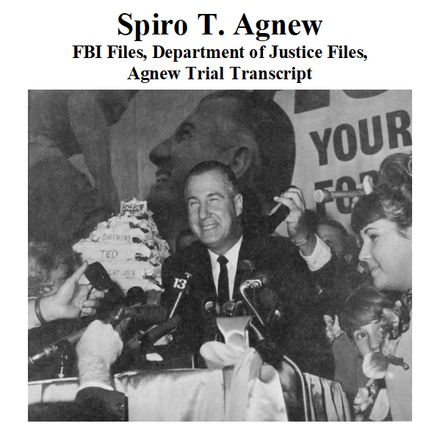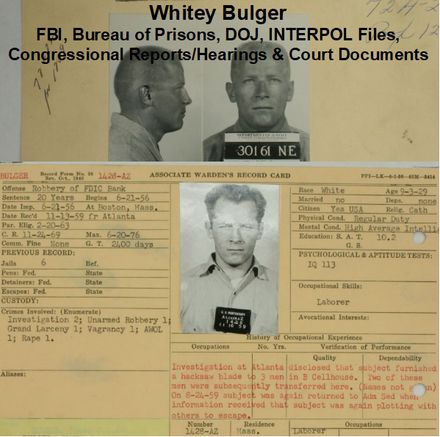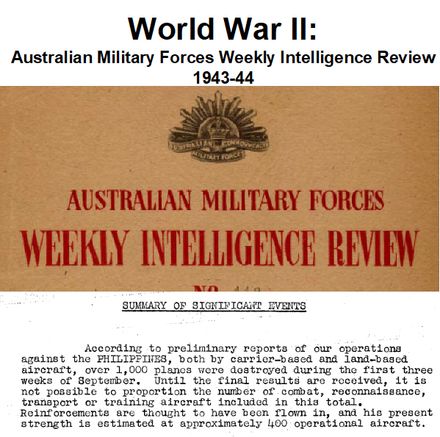$249
Civil War Newspaper Archive USB Card
Civil War Newspaper Archive USB Card
A compilation of 20 BACM Research/PaperlessArchives document collections, 60,137 pages, containing newspaper and periodicals with coverage of the American Civil War era.
Just plug the USB Pen Card into your laptop, desktop, or tablet to access volumes of the newspaper coverage of the Civil War of the type that most American citizens got their information about the events of the Civil War at the time of the conflict.
This collection includes as a finding aid, a unified full-text index of all computer recognizable text in all documents in this collection, making it possible to quickly search all computer recognizable text across all pages of all collections in one search.
The USB Pen card works with any device with a USB 2.0, 3.0 or 3.1 interface.
The Pen card chip is housed in a metal body that is waterproof, shock-proof, temperature-proof, magnet-proof, and X-ray-proof.
Click titles below for complete description and sample pages of each collection.
Collections include:
Abraham Lincoln Campaign Newspapers 1860 - 1864
518 pages of Abraham Lincoln campaign newspapers from the elections of 1860 and 1864. Many newspapers at the time took specific and clearly partisan positions, which were often reflected in the names of the newspaper. The newspapers in this collection go beyond just a partisan political bias. These newspapers were created and existed only to get Abraham Lincoln elected or re-elected President, then ceased publication after the election.
Army Navy Journal & Gazette Volume 1
764 pages of the first volume of "United States Army and Navy Journal and Gazette of the Regular and Volunteer Forces." In 1863, the Army and Navy Journal, as it came to be called, began a long run. The Army and Navy Journal contained social and other items about service personnel, carried articles, correspondence, and news of interest to military people that helped bind its readers together in a common professional fraternity.
Army Navy Journal & Gazette Volume 2
832 pages of the "United States Army and Navy Journal and Gazette of the Regular and Volunteer Forces." This volume covers all the major Civil War events during the period covered in this volume. In addition to major Civil War events, the Army Navy Journal covered stories of courts martial, obituaries, official dispatches from the War Department, appointments, list of AWOLs, foreign military matters, editorials, and advertisements. The Journal included reprints of articles from Confederate publications. Southern newspapers including the Greensboro Journal, Richmond Dispatch, Richmond Enquirer, Richmond Sentinel and Atlanta Constitution
Army Navy Journal & Gazette Volume 3
733 pages of the third volume of "United States Army and Navy Journal and Gazette of the Regular and Volunteer Forces." In the first months after the Civil War, the Army Navy Journal covered post war issues and looked back at some of the episodes of the war. Subjects covered included the reduction and transformation of the Union Army, The last POW exchanges, the construction of cemeteries and monuments, civil unrest, and pardons.
This set contains 733 pages composed of 42 issues (668 pages). The 42 issues include issue Number 1 August 26, 1865, to Number 21 January 13, 1866, Number 23 January 27, 1866, to Number 27 February 24, 1866, Number 30 March 17, 1866, to Number 41 June 2, 1866, and Number 45 June 30, 1866, to Number 48 July 21, 1866. Also included are 65 pages from incomplete issues dating from January 22, 1866, June 9 to June 23, 1866, and July 28 to August 18, 1866.
Battle of Gettysburg Newspaper Coverage in 1863
884 full sheet newspaper pages, from the North, South, East and West with coverage of the prelude, fighting and aftermath of the Battle of Gettysburg. The papers date from June 22, 1863, to July 16, 1863. In and around the Pennsylvania town of Gettysburg, the Battle of Gettysburg was fought from July 1st to 3rd. On July 4th the Confederate Army retreated.
Much of the newspaper reporting was done from Harrisburg, PA, because that is where many newspaper reporters believed the Confederate army was headed. The newspapers begin covering the movements of Confederate forces northward as early as June 22. Much speculation is given to Confederate goals and tactics.
Brownlow's Knoxville Whig and Rebel Ventilator
414 pages, 175 issues of the Civil War newspaper Brownlow's Knoxville Whig and Rebel Ventilator dating from November 11, 1863, to February 21, 1866.
Published by William Gannaway Brownlow, the 17th governor of Tennessee (April 5, 1865 – February 25, 1869), a Methodist parson known as the “The Fighting Parson.” Brownlow's uncompromising and radical viewpoints made him one of the most divisive figures in Tennessee political history and one of the most controversial politicians of the Reconstruction-era south.
Brownlow’s pugnacious editorial stances and willingness to meet violence with violence made him famous and earned him the nickname, “The Fighting Parson.” In the 1830s, before he published his first newspaper, he was sued for libel and was shot in a religious dispute. In the years that followed, Brownlow was shot at through a window in his home, shot in the leg during a fistfight, beaten at a camp meeting after his derringer misfired, and was severely injured by two attacks with clubs. One of his newspaper’s slogans sums up his journalism and his life, “Independent in all things—Neutral in nothing.”
Chattanooga Daily Rebel - Confederate Newspaper
526 pages, 272 issues of The Chattanooga Daily Rebel published between August 9, 1862, to April 27, 1865. The best available sources were used to compile this collection. The set contains approximately 420 discernable pages. This newspaper was published with both the names The Chattanooga Daily Rebel and the Daily Chattanooga Rebel.
The Rebel was one of only a few Tennessee Confederate newspapers that remained in circulation throughout the war. In its attempt to stay ahead of the Union Army, the Rebel was forced to move from town to town and soon earned the nickname the “Rebel on Wheels.” Over the course of the war, the paper was published in Chattanooga, Tennessee; Marietta and Griffin, Georgia (as the Daily Chattanooga Rebel) in 1864-65; and, finally, Selma, Alabama, (once again as the Chattanooga Daily Rebel) in 1865.
Confederate States Medical & Surgical Journal 1864 - 1865
282 pages, all 14 issues published, dating from January 1864 to February 1865, of the Confederate States Medical & Surgical Journal, copied from material held at the Boston Medical Library in the Francis A. Countway Library of Medicine in Boston, Massachusetts.
The only medical periodical issued under the Confederacy, the Confederate States Medical & Surgical Journal was published monthly in Richmond, Virginia. Most articles in the Confederate States Medical & Surgical Journal (C.S.M.S.J) are case reports, reports on the progress of the war, depictions of wound treatment and surgical facilities, hospital reports, descriptions of the uses and supply of drugs, the supply of drugs from plants indigenous to the South, news of medical research in Europe, developments in prosthetics, discussions of disease outbreaks, clinicopathologic correlations, and statistical analyses.
Forney's War Press Newspaper 1863
240 pages of Forney's War Press published in 1863. Forney's War Press was a newspaper dedicated to carrying Civil War news. Issues were published weekly in Philadelphia, Pennsylvania and contained engravings, news from war correspondents, casualty reports, poetry, and humor.
Frank Leslie's Illustrated Newspaper 1860-1865
3,700 pages of Frank Leslie's Illustrated Newspaper covering the Civil War years of 1860 to 1865.
Every issue published from November 24, 1860, through January 5, 1861, March 2, 1861, through June 20, 1863, July 4, 1863, through September 19, 1863 and January 2, 1864 through September 16, 1865.
In the first issue of its 16th volume, the paper wrote of its Civil War era coverage, "During the whole of this momentous struggle for National existence, we have had our own accredited Artist with every expedition, as well as with every regular army, besides numerous volunteer correspondents, who have kept us fully advised of every incident great and small of the eventful crisis. But our War Illustrations speak for themselves and demonstrate that they are the most truthful and spirited ever published. In addition to these War pictures, we publish authentic representations of all current and important events, local and national, with brilliant and original works of fiction, poetry, a comprehensive epitome of the news of the week, foreign intelligence, and other interesting reading matter."
Frederick Douglass' Monthly (1859-1863)
738 pages of Frederick Douglass's monthly newspaper, "Douglass' Monthly." Issues dating from January 1859 to June 1863. This collection does not contain issues for September 1859, January-March 1860, May 1860, June 1862, December 1862, and May 1863. It is not clear if issues were published for these dates. Indications are that Douglass was having financial difficulties with the paper and issues for those dates may not have been published.
The Douglass' Monthly was the successor to Frederick Douglass’ earlier abolitionist papers: The North Star and the Frederick Douglass' Paper. This monthly publication was also devoted to the abolitionist movement and social reform. The motto of the paper was, "Freedom for all or chains for all." Many articles covered the Underground Railroad, state slave laws, lynchings, slave auctions, fugitive slave cases, the fate of John Brown, kidnapping of slaves and free blacks, and their return to slavery or being sold into slavery.
Once the Civil War broke out much attention in the Monthly was turned towards it. Douglass welcomed the war as an opportunity to end slavery and an opportunity for blacks to raise their status in the United States through military service. Through the Monthly, he recruited black Union soldiers for the African American Fifty-Fourth Massachusetts Volunteers. His sons Lewis and Charles both served in this regiment and saw combat. The Monthly contemplated if the war would end slavery, criticism about the progress of the war and emancipation.
Harper's Weekly 1861 - 1865
4,176 pages, every issue of Harper's Weekly from January 5, 1861, to December 30, 1865.
In an effort to maintain readership in the South, Harper's took an acceptance stance on slavery. In the presidential election of 1860, Harper's supported the Democratic nominee Stephen Douglas, over Republican nominee Abraham Lincoln. After the Civil War began, the Weekly firmly supported Lincoln and the North. During the war, circulation reached 200,000. In addition to the Civil War, this Harper's Weekly collection covers other events occurring from 1861 to 1865, including the assassination of President Lincoln.
New York Times 1860
1,989 pages of the New York Times dating from January 1, 1860, to June 30, 1860, and October 1, 1860, to December 31, 1860, plus a subject index for the New York Times 1860.
New York Times 1861
2,616 pages of the New York Times dating from January to August and October to December 1861, plus a subject index for all the 1861 issues of the New York Times.
New York Tribune Almanac and Political Register (1856-1869)
978 pages of the annual Tribune Almanac and Political Register (1856-1869). First published in 1856 the Tribune Almanac and Political Register published the traditional astronomical calculations and calendars found in almanacs. It also included reference information on government and politics. It covered major laws and election returns for state and national offices, and political conflict in the United States before the Civil War. After Fort Sumter, coverage of the Civil War was added. After the war topics involving reconstruction was added.
Tennessee Civil War Sourcebook
10,673 pages of transcripts of Civil War documents dealing with the war and the state of Tennessee. The documents date from September 1, 1861, through September 30, 1865. The transcriptions are of Newspaper articles, extracts from The War of the Rebellion: A Compilation of the Official Records of the Union and Confederate Armies, diaries, ship deck logs, letters, and journals.
The Crisis Northern Pro-Confederate Newspaper
1,664 pages of The Crisis, Northern pro confederate weekly newspaper, issues dating from January 31, 1861, to January 25, 1865.
The Crisis was published in Columbus, Ohio and edited by Samuel Medary. He founded the newspaper "The Crisis" in an effort to thwart Unionist politics. The editorial position of the newspaper was that it was wrong for the federal government to seek limits on slavery and engage in warfare against the Confederate States of America. The newspaper promoted the politics of Northerners who sided with the positions and opinions at the foundation of the Confederacy, often referred to as "Peace Democrats" or "Copperheads."
The Index Weekly Journal - Confederate Weekly Journal 1862-1864
2,180 pages in four volumes of the Confederate financed, "The Index. A weekly journal of politics, literature, and news; devoted to the exposition of the mutual interests, political and commercial, of Great Britain and the Confederate States of America."
A subject index is included for volumes 1 and 3.
The London based and Confederate funded weekly journal billed itself as, "Last Direct Intelligence from the South, Private Letters from the Southern and Northern States, Foreign Correspondence, information on the Cotton and Dry Goods Market and other commercial reports".
The Rebellion Record-A Diary of American Events, with Documents, Narratives, 1861 to 1868.
9,680 pages, in 12 volumes of the "The Rebellion Record: A Diary of American Events, with Documents, Narratives, Illustrative Incidents, Poetry, Etc," 1861 to 1868.
A real-time Civil War history. The Rebellion Record is unique in that it began to build a history of the Civil War while the war was still being fought. The Rebellion Record grew to a twelve-volume set (eleven volumes and a supplement to the first volume) that was published during the Civil War and in the three years following. This collection was a key resource on the Civil War both during the war and in the decade following the conflict. It was one of the main sources for access to the content of primary source documents for historians, students, the military, and individuals seeking more in-depth information about the war. Its position was replaced when the 128 volumes of the Official Records of the War of the Rebellion were published between 1881 and 1901. Yet it still can be used as a period source of newspaper reports from North and South, various documents and reports, public addresses, maps, and engravings.
United States Congressional Record - Congressional Globe 1861-1866
16,550 pages of the Congressional Globe, which later became the Congressional Record, covering debates and proceedings of the 37th, 38th, and 39th congressional sessions of the Senate and the House of Representatives, messages of the President to Congress and reports of cabinet officers, dating from March 4, 1861, to July 28, 1866



